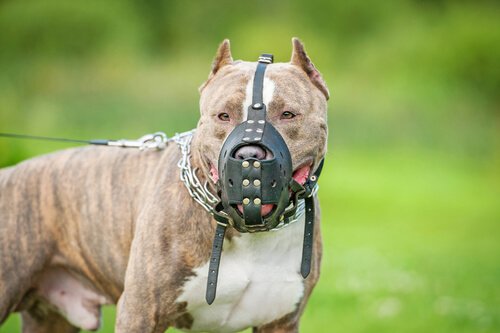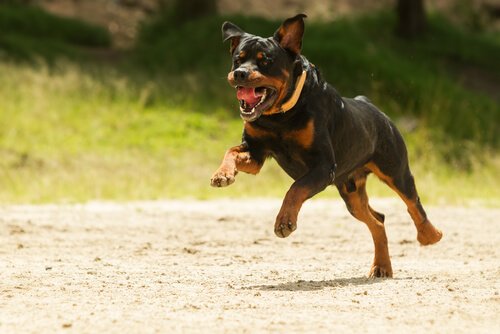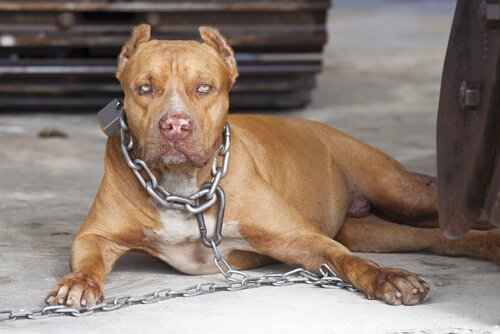What is A Potentially Dangerous Dog

The term Potentially Dangerous Dog stands for dog breeds that have certain morphological or behavioral patterns. Many of these breeds have been previously used to breed fighting or guard dogs.
However, there is still an incomplete agreement about what the term ‘Potentially Dangerous Dog’ means. Currently, each country can apply its own criteria to define and categorize a Potentially Dangerous Dog.
Main Criteria
Each country, they can use certain relevant traits in order to come up with a list of potentially dangerous dogs. In general, the important features that most countries agree on are the following:
- Strength due to their physiology.
- Muscular body which is natural but highly developed.
- Minimum body weight in general, over 20kg.
- Powerful jaws, normally in combination with a large and square head.
- Notable resistance to pain.
- “Greater tendency” towards aggressive behavior.
Spanish Legislation
In Spain, the Royal Decree 287/2002, dated on March 22, 2002, regulates ownership of a potentially dangerous dog. However, the classification of potentially dangerous dogs isn’t as simple as it seems and can sometimes appear quite arbitrary.

In fact, each autonomous community in Spain has the right to modify or add criteria to the original concept in the Royal Decree. This explains why, although the Spanish government lists 8 potentially dangerous breeds, Andalusia has 9, the Canary Islands has 10, Galicia, lists 15, Valencia has 14, and Catalonia lists 13.
In general, the flexibility of the Royal Decree isn’t that great for dog owners. For example, there would be no problem with owning a Doberman in Madrid. However, if you were to travel to Andalusia, your dog would be considered potentially dangerous. With this comes a number of responsibilities and prohibitions regarding the routines of both dog and owner.
All of this means that cross-breeds which contain the genes of such breeds also become classified as potentially dangerous. This can make things very complicated if you adopt a mixed-breed dog.
Potentially Dangerous Dog Breeds in Spain
On a state level, the Royal Decree 287 of 2002 defines the following breeds as potentially dangerous:
- Pitbull Terrier
- American Staffordshire Terrier
- Rottweiler
- Dogo Argentino
- Tosa Inu
- Akita Inu
- Brazilian Mastiff
- Staffordshire Bull Terrier
Other traits of “Dangerous” Dogs
Aside from what the law states, a dog can also be “dangerous” in Spain, whether pedigree or mongrel, if it has the following traits:
- Muscular and compact body.
- Body weight of more than 20 kg.
- Morphological traits like a square head, powerful jaws, or large mouth.

Requirements for Adopting a Potentially Dangerous Dog in Spain
In Spain, owning a potentially dangerous dog is not banned. However, the owner needs to comply with certain requirements in order to own one legally:
Handling License
A handling license isn’t just needed for the owner, but also for all people who may take the dog into a public space. It also needs to be renewed every five years and the have following requirements:
- Being over 18 years old with an original National Identity Number.
- No criminal background in drug trafficking, murder, or gang membership.
- Public liability insurance, with a minimum coverage of 120,000 euros.
- Pass the relevant psychiatric and physical tests.
- A certificate of good health from a registered vet.
Registering a Potentially Dangerous Dog
Once you’ve obtained a handling license, you’ll need to go to your local city hall to register your animal on the Municipal Register of Potentially Dangerous Animals. Then, in case your dog ever escapes, you’ll need to file a report to the city hall.
Basic Advice for Safely Walking with a Potentially Dangerous Dog
- Carry your license and municipal record every time you go for a walk.
- Always walk the dog on a leash (non-extendible, maximum length 2 meters) and a muzzle.
- Always walk one dog at a time.
- If your dog is loose in a private area, such as a garden, it’s important to make sure that the whole perimeter is well protected. This is to stop your dog from escaping or causing accidents.
